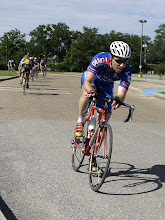Experiencing movement
There are many things that go into the kettle that make an athlete successful. Experiencing a wide scope of movements and their results or failures is very important. Our brain/body learns by repetition and exposure. Take young children for example. When they first learn to get up on their hands and knees, they practice it over and over and over. They rock back and forth and fall. Then they learn to rock back and forth and react to prevent the fall. Then they practice it over and over and over. So, having a broad scope of movement experience gives the body a large library to draw on. Crosstraining is highly regarded because is provides alternatives to the typical movement experiences that we have during our primary sport. Crosstraining also provides a good mental break from training.
I say this to set the foundation for the following statement. The body also has the ability to become very good(effective/efficiency) by practicing specific movement patterns. It takes thousands of repetitions to "hardwire" movement patterns. If you train for one specific set of movements during training and then change to a different set of movements for competition, you will not perform as well. Your brain will have to work harder to perform the same set of movements. Your neuroreceptors/mechanoreceptors will have to work harder to report joint position and muscle tension to the brain. Your muscles will have to work harder to accommodate for errors in movement.
Cycling has it's own unique set of circumstances because of the huge number of repetitions. During a typical one hour ride, a cyclist will perform 5000-6000 repetitions. These patterns are very well established. Changes have significant effects.
Cyclists should be working hard to become effective pedalers at all levels of exercise intensity.


0 Comments:
Post a Comment
<< Home